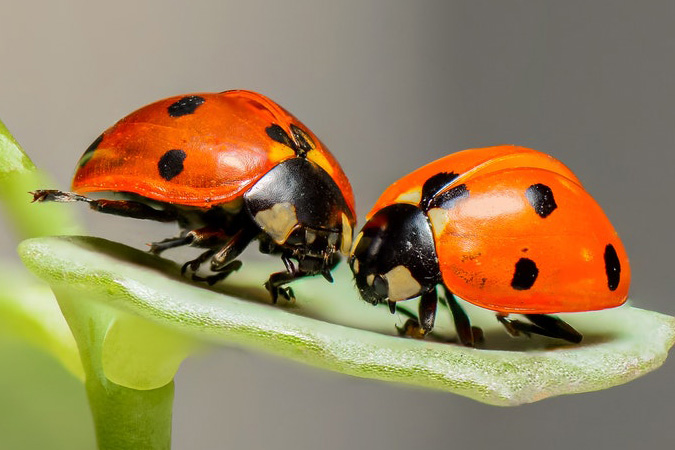Levels of Integration in IPM
The level of integration that a production system can achieve is often dependent on the scale of production. The higher levels of IPM integration require systematic change on a community-wide basis. The following levels of integration have been proposed as IPM is adopted into more sustainable agricultural practices:
- Level 1 integration: Individual pest species or species complexes.
- Level 2 integration: Community of pest species (insects, pathogens, weeds)
- Level 3 integration: Ecosystem (crop and non-crop host plants and other components)
- Level 4 integration: Farming community (including social and economic components)

Steps in Implementing an IPM Program
The following information and additional information can be found in the publication, Integrated Pest Management: Concepts and Strategies.
-
1. Identify pests
Identifying pests is a critical step in developing managing strategies. In many cases, a single pest is of primary concern; however, many pests can be managed in similar ways (for instance, several stink bug species cause similar damage to fruiting structures of crops and can be managed as a species complex). Identifying all the pests that require management can promote the use of strategies that are effective in preventing a range of pests.
-
2. Determine acceptable injury level (Economic Injury Level and Economic Threshold)
Research-based economic injury levels (EIL) and economic thresholds (ET) are available for many major pests and can be found in crop production and management guides.
Economic injury level is the lowest acceptable level of pest density that will cause economic injury equal to the cost of control. The ET is set below the EIL and is the point at which management applied to prevent reaching the EIL.
-
3. Monitor pest population levels
Achieved/accomplished through trapping or scouting of managed areas. Degree day models are predictive tools involving simple calculations using high and low daily temperatures to determine when pest species may be emerging and can sometimes help to optimize the timing of sampling efforts.
-
4. Evaluate management options
Determine all available control methods for the pest or groups of pests. Prevention or exclusion of target pests is often the first line of defense, then biological or chemical control can be used if pest levels still reach economic levels.
-
5. Develop and Implement an IPM Program
Pest exclusion or prevention should be used whenever possible, for all previously identified pests. These strategies must be used prophylactically. If populations still reach previously determined threshold levels, implement one or more of all the other available control strategies. Chemical management should be supplemental and used if all other strategies fail. Chemical applications should be made at the determined acceptable level of injury or ET.
-
6. Monitor management effectiveness
Continue to monitor pest population levels after control implementation. This is a critical portion in IPM as it can inform the use of additional management strategies.
-
7. Evaluate program
Evaluate the effectiveness of each step in the IPM implementation process to determine strengths and shortcomings for future management.

